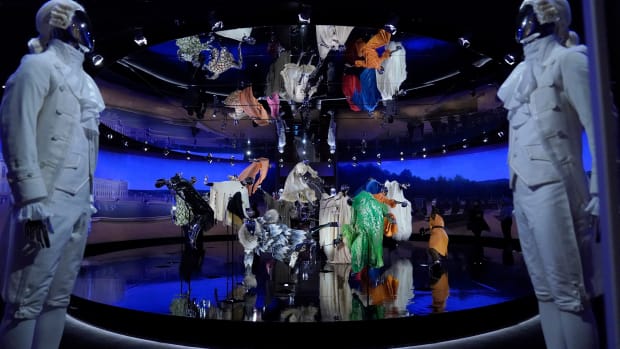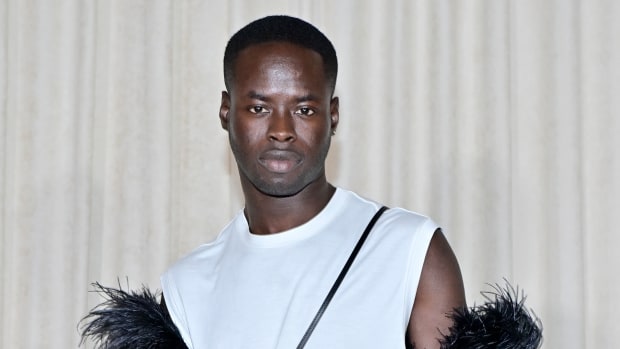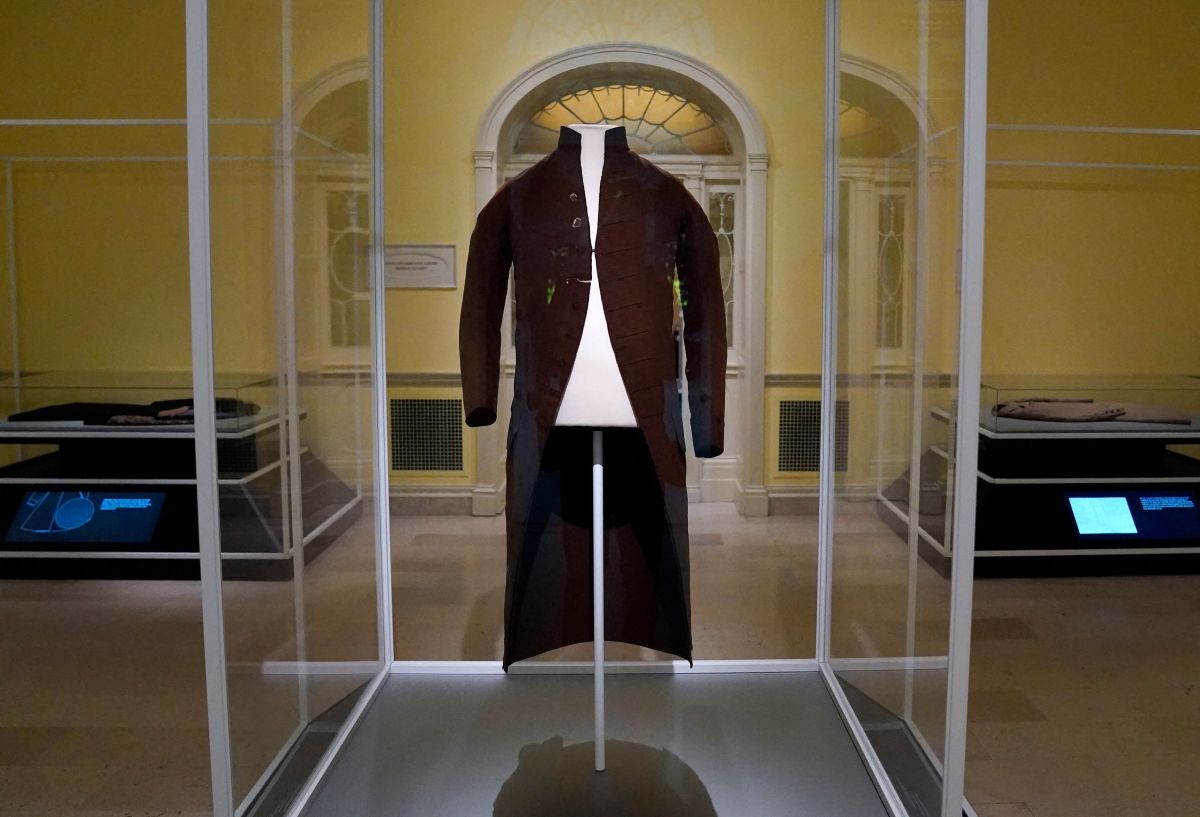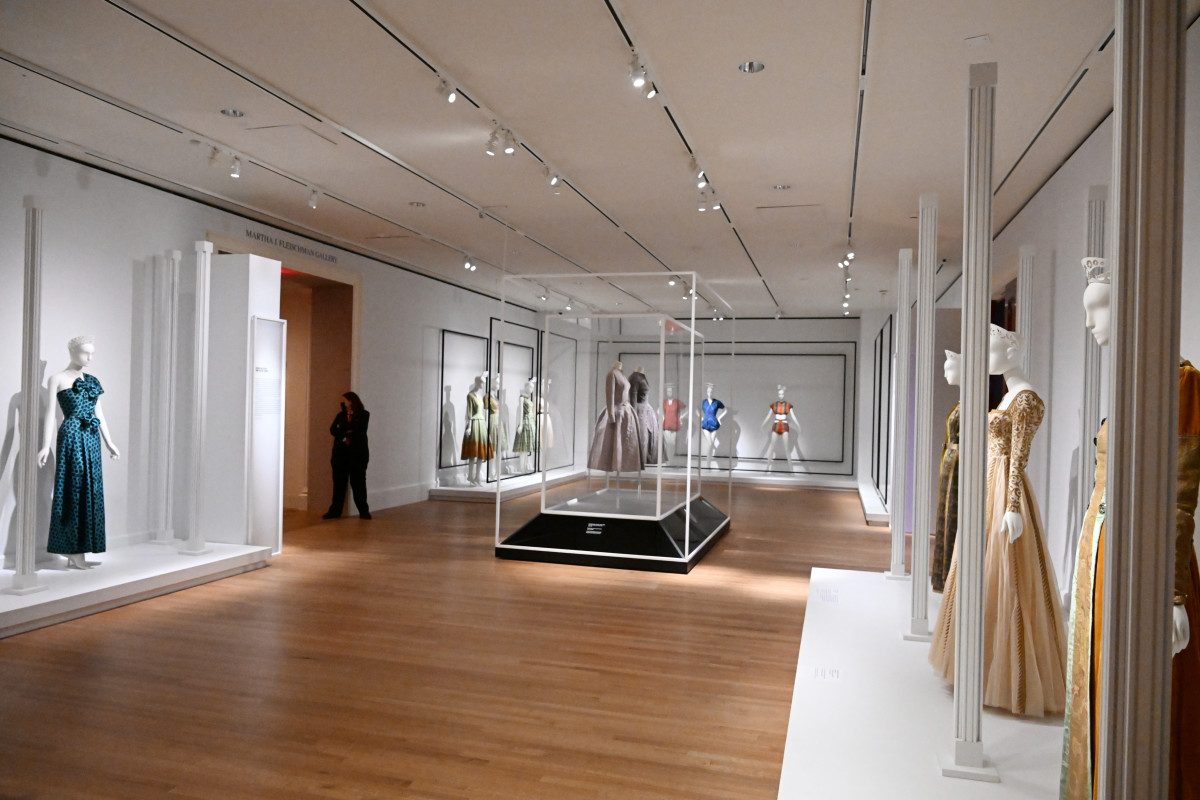When "In America: A Lexicon of Fashion" opened at the Metropolitan Museum of Art in September, some attendees were left...underwhelmed. The fashion on display was beautiful — not to mention one
of the most diverse selections seen in a Costume Institute exhibition — but following the staging of shows the multi-building-sweeping "Heavenly Bodies: Fashion and the Catholic Imagination" or the perfectly-restrained "About Time," it was challenging to feel impressed by garments isolated in lit boxes, no matter what adjective was perched above the mannequins' heads.
Those who wished for more showmanship are sure to be delighted by the second installment in the ambitious two-part series, "In America: An Anthology of Fashion," located within the period rooms of the American Wing. (This also makes it the third and final exhibition in a trilogy of period room shows, preceded by 2004's "Dangerous Liaisons: Fashion and Furniture in the 18th Century" and 2006's "AngloMania: Tradition and Transgression in British Fashion," staged in the French and British period rooms, respectively.)
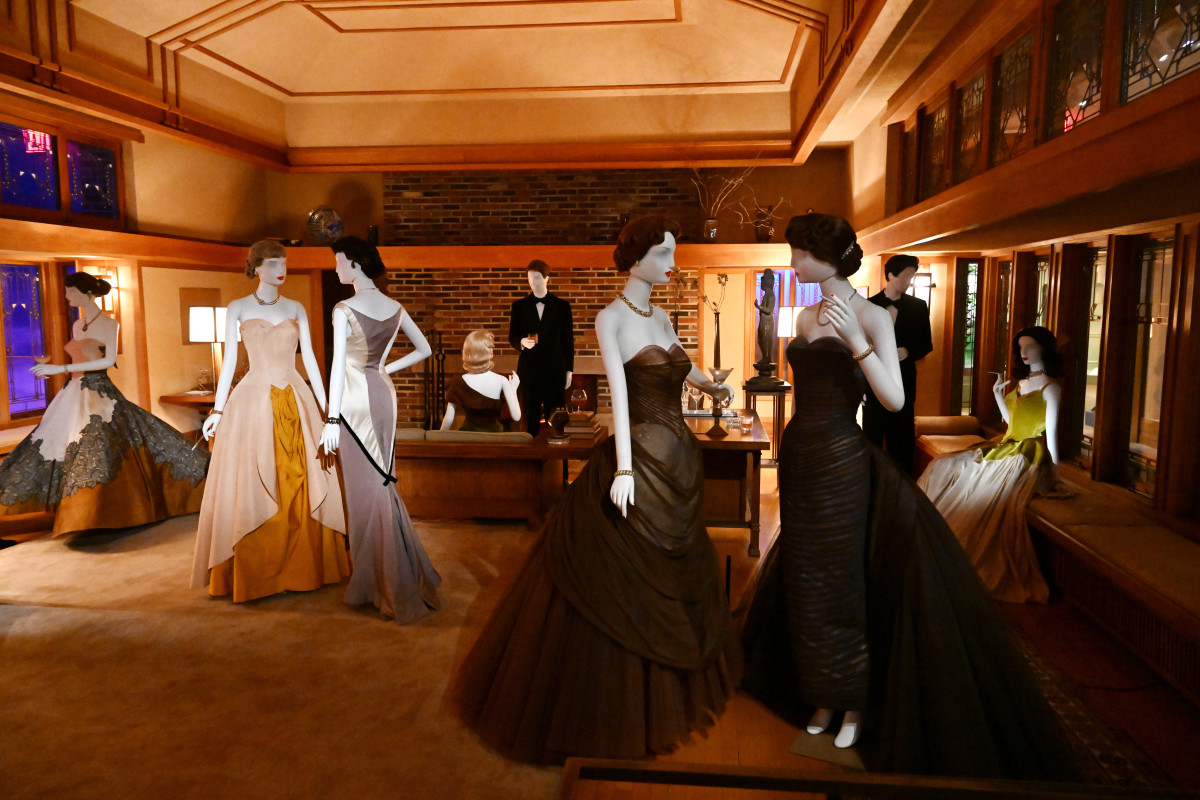
A room staged by Martin Scorsese in the "In America: An Anthology of Fashion" exhibition.
Photo: Slaven Vlasic/Getty Images
The Costume Institute tapped nine film directors — Autumn de Wilde, Regina King, Radha Blank, Chloé Zhao, Tom Ford, Julie Dash, Janicza Bravo, Sofia Coppola and Martin Scorsese — to create individual scenes that live within the exhibition and that, according to curator Andrew Bolton, are intended to "[enhance] the intimate and immersive aspect of the rooms, and [activate] their histories in compelling and unexpected ways."
"The directors were selected based on the themes of the stories, and each one has approached them through their own, very distinct creative visions," said Bolton in his remarks at Monday morning's press preview. "They've used cinematic techniques to convey the dynamism and movement to otherwise static displays, and while each vignette is presented as its own distinct short film, the exhibition itself is experienced as a feature film with interconnected stories."

A room staged by Julie Dash in the "In America: An Anthology of Fashion" exhibition.
Photo: Slaven Vlasic/Getty Images
The most sweeping and cinematic of these are sure to be favorites on social media. Ford was given the room dedicated to 1973's Battle of Versailles, the famous runway showdown pitting American designers against the French; his gleaming silver mannequins take dynamic poses, stabbing at each other with epées or flying through the air. In the Renaissance Revival Room by Dash — which is dedicated to mid-century Black designer Ann Lowe — there are mannequins in all black working over each gown on display, tulle veils catching in a light breeze.
Scorsese takes over the Frank Lloyd Wright room with mannequins clad in Charles James (himself the subject of the 2014 Costume Institute exhibition, "Charles James: Beyond Fashion"; some of those gowns are repeated here), gathered at an elegant — and perhaps slightly ominous — party, the Alfred Newman-composed soundtrack from John Stahl's 1945 film "Leave Her to Heaven" playing in the background.
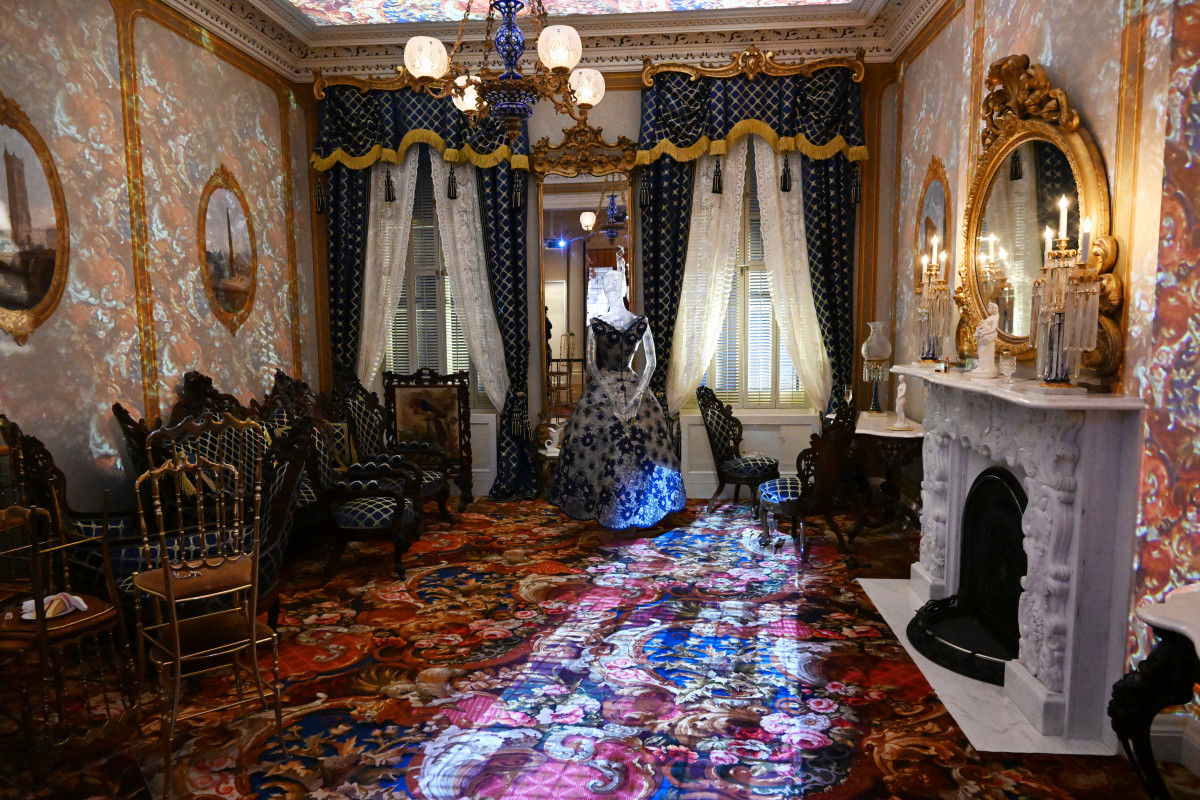
A room staged by Janicza Bravo in the "In America: An Anthology of Fashion" exhibition.
Photo: Slaven Vlasic/Getty Images
The smaller rooms still pack quite a punch themselves. Zhao manages to perfectly translate her own cinematic sensibility in the Shaker Retiring Room, with sparse, near Puritanical designs from Claire McCardell on display. Crafting a narrative around the mannequins, Bravo creates some of the vignettes which feel most alive: One has a door opened to a party scene from Bernando Bertolucci's 1970 film "The Conformist," with the party's host having escaped the bustle for a moment of peace in a side room; her 1960s dress, Bravo notes, "smells of cologne, cigars and cake."
Blank brings attention to uncredited Black labor throughout American history, projecting images of Black women's hands onto the train of a gown and adding a long beaded headpiece "made within African braiding and beading traditions that are the Black women signifiers of today," the colors drawing from the "Work-Clothes Quilt" by Mary Lee Bendolph of the legendary Gee's Bend quilters.
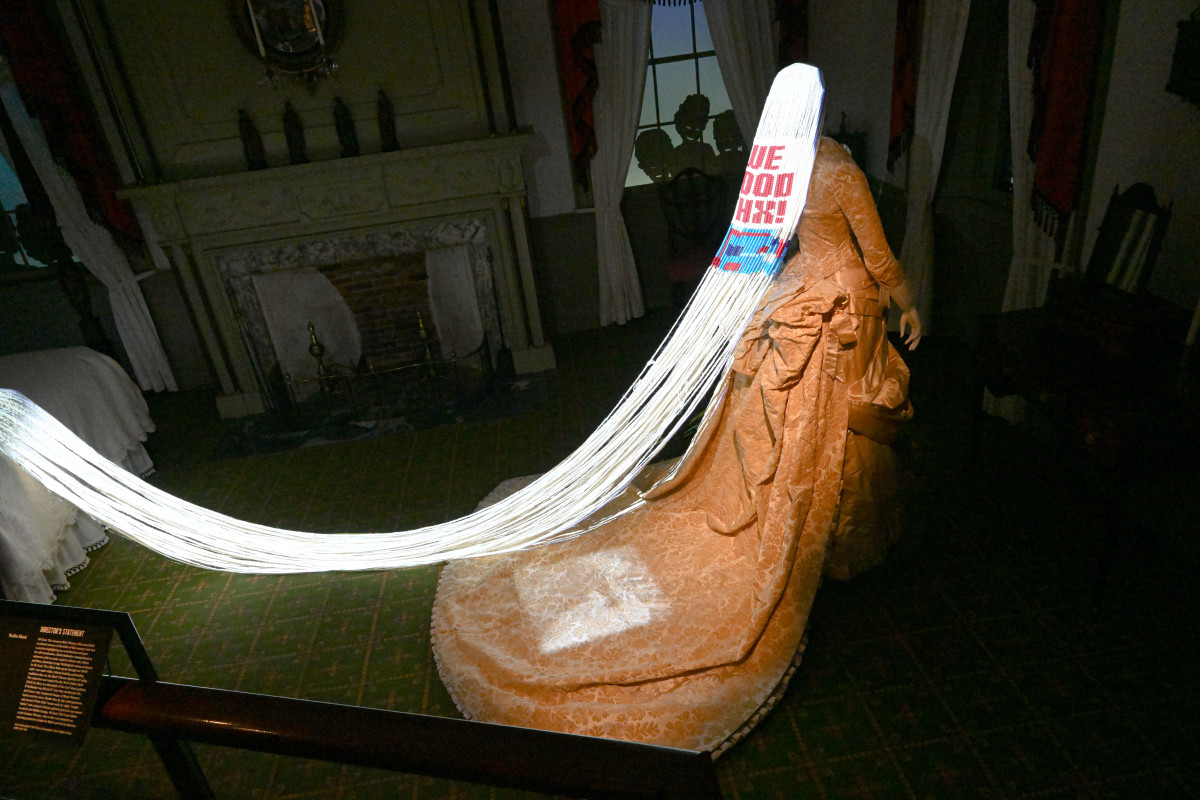
A room staged by Radha Blank in the "In America: An Anthology of Fashion" exhibition.
Photo: Slaven Vlasic/Getty Images
But all that pomp and circumstance adds up to nothing without meaning behind it — and to that end, Bolton is once again ambitious in his scope. "In America: An Anthology of Fashion" attempts to explore two overarching themes, he argues: "the emergence of identifiable American style and a rise of the named designer, someone recognized for their distinct creative vision." As such, "Anthology" is much more focused on historic garments from the 19th and 20th centuries than it is contemporary fashion. (The most recent designers represented are those who showed at the Battle of Versailles.) Bolton also worked alongside the curators of the American Wing to further their own attempts at diversifying what and who is represented from American history with this exhibition.
Recommended Articles
"In America: An Anthology of Fashion" opens with a coat worn by George Washington to his first inauguration, flanked by two Brooks Brothers coats: one worn Abraham Lincoln when he was assassinated, the other worn by an enslaved man.
In between the vignettes are more static rooms, much more akin to the simple displays of "Lexicon," with garments operating as case studies — like a Christian Dior original seen alongside its American copy, breaking down the subtle differences in the way the American version was produced to better suit its audience. (The very "Emma"-esque rooms by de Wilde also feature garments illustrating the growing divide in European versus American sensibilities, with one mannequin scandalously wearing the breast-baring Empire-style dress favored by the French rather than the more modest versions adapted for, shall we say, more Puritanical minds.)
"Taken together, these case studies and the stories told in these rooms comprise an anthology that challenges and complicates perceived histories," Bolton said. "This anthology reflects ongoing research by curators in the Costume Institute to explore untold stories in our collection, stories that highlight the work of designers who have been forgotten, overlooked or relegated to a footnote in the annals of fashion history."
Bolton noted that "In America: An Anthology of Fashion" is meant to serve as a preface to "In America: A Lexicon of Fashion," and indeed, the first part makes much more sense taken alongside the second.
"While 'Lexicon' is expansive, reflecting on qualities that have defined, and continue to define, American fashion, 'Anthology' is more focused, presenting isolated stories on the work of individual designers and dressmakers, many of whom were women," Bolton said.
They work both in conversation with and as annotations of each other — still, for a visitor who hasn't yet seen "Lexicon" (which will remain on view alongside "Anthology" through September 5, making the former the longest-running Costume Institute exhibition in Met history), the narrative will make more sense starting with the historical base established by "Anthology," the adjectives and the reference points given for contemporary designs finding more robust meaning with the overview given in the period rooms.
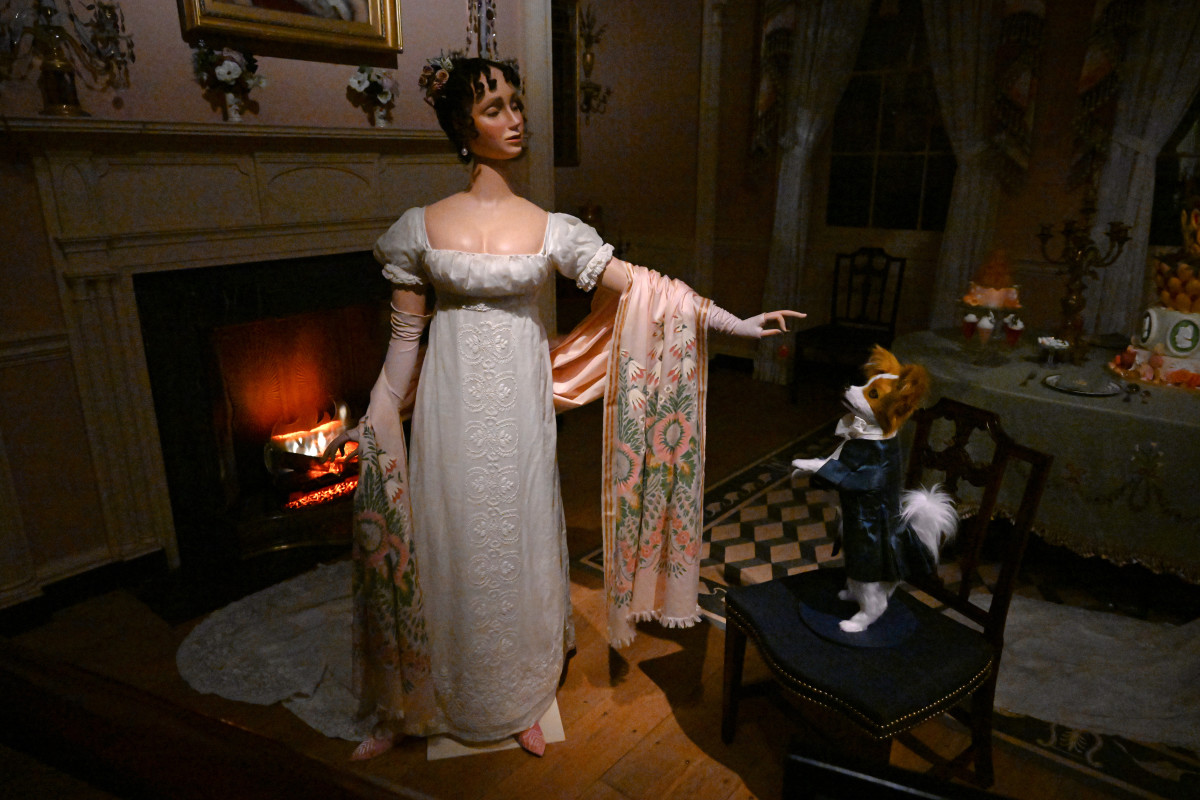
A room staged by Autumn de Wilde in the "In America: An Anthology of Fashion" exhibition.
Photo: Slaven Vlasic/Getty Images
As with anything this ambitious, "In America: An Anthology of Fashion" is not without its drawbacks. It's not quite laid out in a chronological manner due to logistical constraints — you have to cross through the Battle of Versailles room in the middle of the exhibition, for example, but it naturally makes the most sense to stage it in the room which holds the 19th century panorama paintings of Versailles itself — which just slightly lessens the impact of the intended narrative. And, for the same reason, some of the rooms are tiny; even during the press preview, portions of the exhibition felt tight with just two or three people in a space, which could make the typical blockbuster crowds something of a challenge.
Still, it's a gorgeous and moving exhibition, and worth taking the time to truly explore every facet in each room. This isn't one to race through, glancing only at the garments: The multimedia aspect, as well as the accompanying text, make for a richer experience taken as a whole.
Unlike past exhibitions, "In America: An Anthology of Fashion" isn't a tour through runway highlights from the past several decades. (Those can be found in the Anna Wintour Costume Center downstairs.) Instead, it's a loving tribute to the many creators who have until now slipped past without celebration, but who are responsible for laying the foundation upon which the American fashion industry sits today. It can best be summed up by a quote from J. R. R. Tolkien, with which Bolton ended his own remarks: "A story must be told, or there'll be no story. Yet it is the untold stories that are the most compelling."
Want the latest fashion industry news first? Sign up for our daily newsletter.

